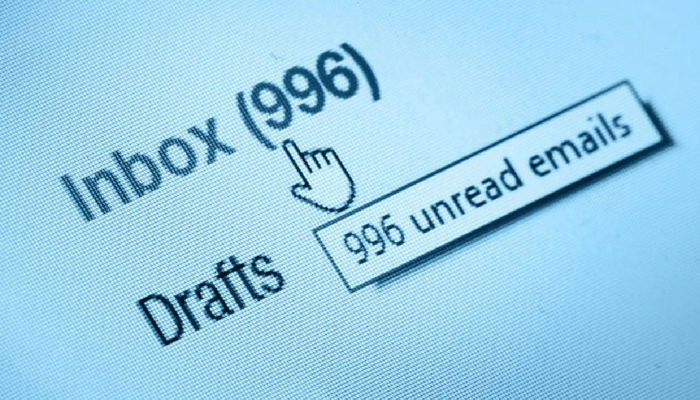 Nothing manages to suck up time quite like emails. We sit down ready to work, only to be unknowingly sidetracked by dings, pings, and popups. And these dings add up. In fact, a recent study showed that we waste up to a quarter of the work day on email. The bigger problem is, all of this time we spend on email is spread throughout the day, so it’s often the case that an important task is interrupted by a less important email. And because most of us still think of ourselves as proficient multitaskers, we attend to the email.
Nothing manages to suck up time quite like emails. We sit down ready to work, only to be unknowingly sidetracked by dings, pings, and popups. And these dings add up. In fact, a recent study showed that we waste up to a quarter of the work day on email. The bigger problem is, all of this time we spend on email is spread throughout the day, so it’s often the case that an important task is interrupted by a less important email. And because most of us still think of ourselves as proficient multitaskers, we attend to the email.
Here at The ONE Thing, we know that no good can come from multitasking. Not only do we waste time when we switch between tasks and re-focus our attention, but our performance on both tasks is done with less precision. With concentration and performance both dwindling, it’s no wonder that a constant flow of emails is detrimental to our productivity.
Constant emailing has also been shown to contribute to workplace tension.
A study by doctors in Irvine, CA found that the more time people spend on email, the less they feel they get done and the more stressed they feel.
Assuming that no one likes to be unforced, unproductive, and stressed, what do we do? The first step is email batching.
Email batching is the idea of designating a set time (or times) in the day to focus only on email. Since our brains waste time every time we switch tasks, the idea is to minimize how many times we need to switch, thus minimizing the amount of wasted brain time. Additionally, the lack of task switching allows your brain to fully focus on the task at hand.
Tim Ferriss, author of The 4-Hour Workweek and productivity master, is a huge proponent of time blocking. So much so, in fact, that he laid out his process for readers to adapt to their own lives. While people may take his approach and tweak it to work for themselves, Tim lets his email recipients know that he checks his email once daily, in the evening, and suggests they get in touch by phone if there is urgency to their communication. With email time pre-determined, he is actively protecting his time for his top priority.
Ferriss’s use of automatic responders to let people know that their message will be dealt with in due time is a great tool for protecting your time block. If you are someone who feels anxious about not immediately responding to others, the automatic response can manage the expectations of others and help everyone get on the same page, which can do wonders for your stress level.
While email batching is the most common activity, the idea works for any task, whether it’s email, texting, or social media. Determine which mindless task is taking too much time away from your ONE Thing and batch it up: set a standard time each day for a phone break where you can respond to texts, scroll through Instagram or interact on Facebook. Even if you wouldn’t consider the activity a task, it can still be batched.
We’ve talked in the past about time blocking before and how to use it effectively to focus on your ONE thing. Well, email batching is just time blocking for the non-essential tasks, which can be equally as important.
The same doctors from Irvine, CA who looked at stress also looked at the results of email batchers, and the results were clear: it increased productivity. Others have reported feeling more focused and thus more positive about their work.
Take a look at your day and see what you can batch, and when. Your body and mind will appreciate you for it – as will your boss.
Have you tried email batching before? What did you think? Let us know on our Facebook page!
